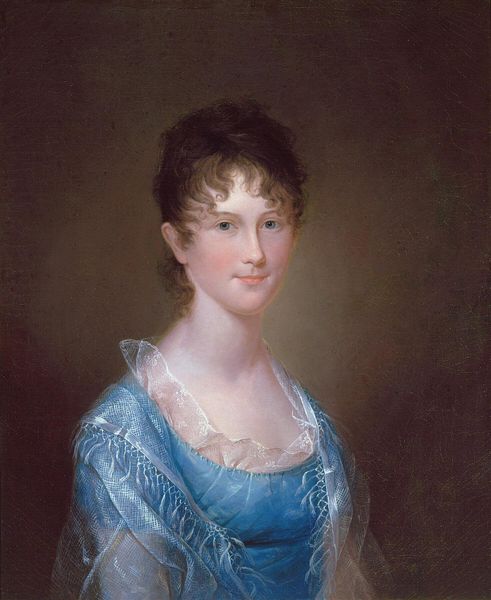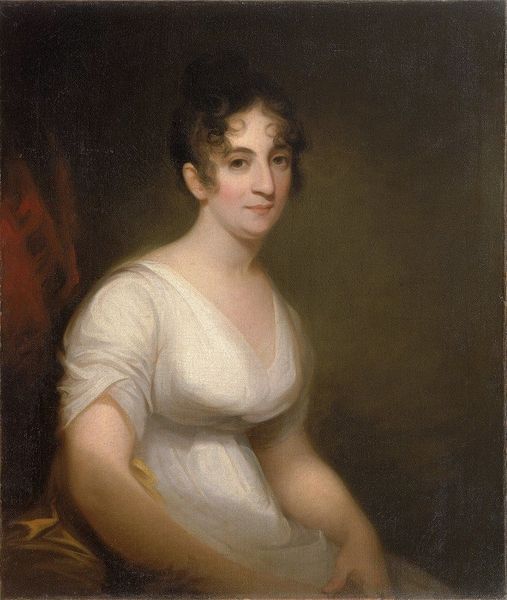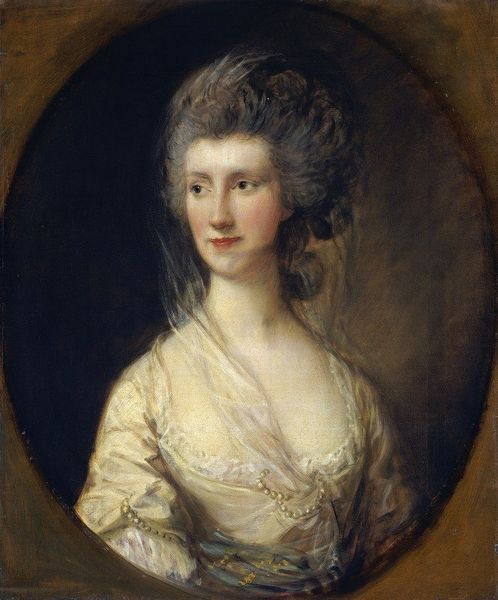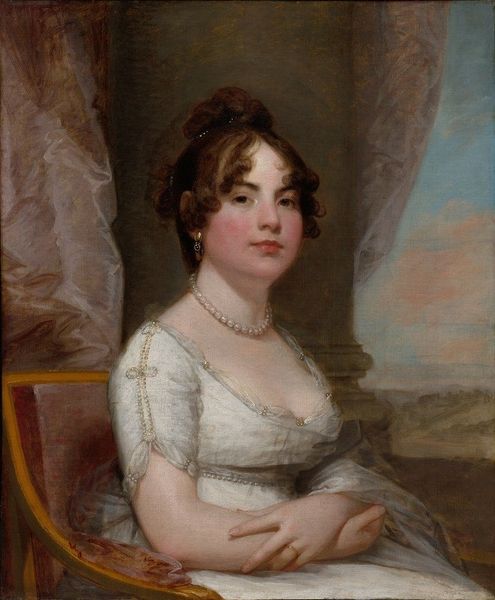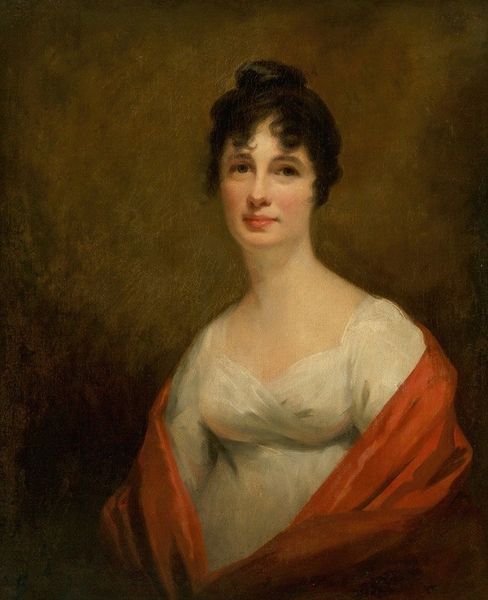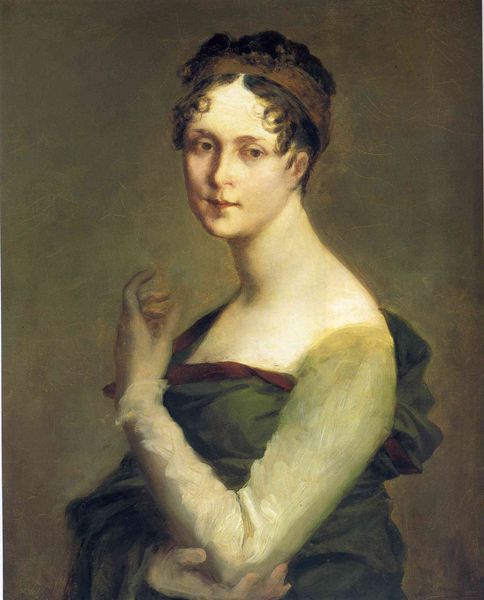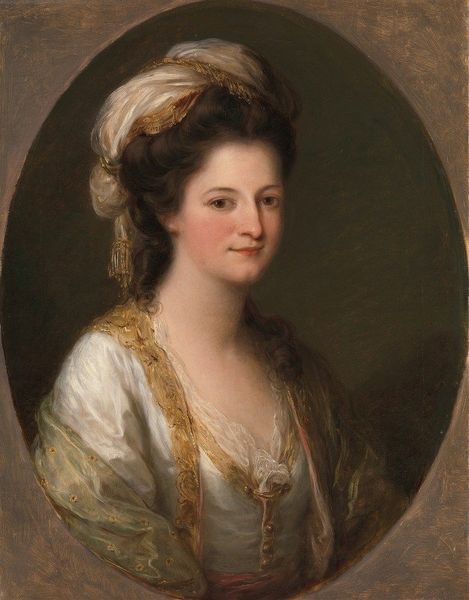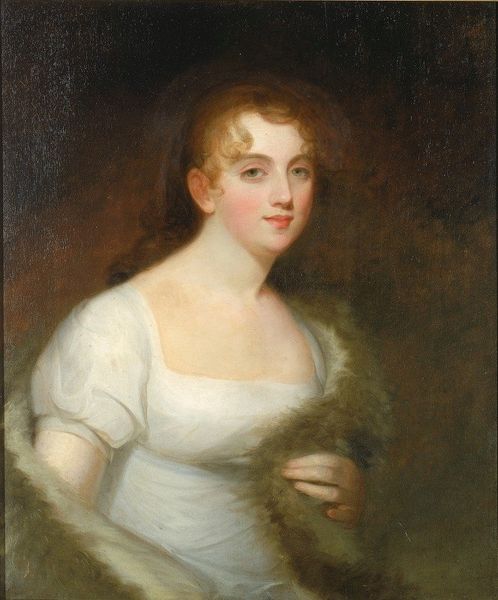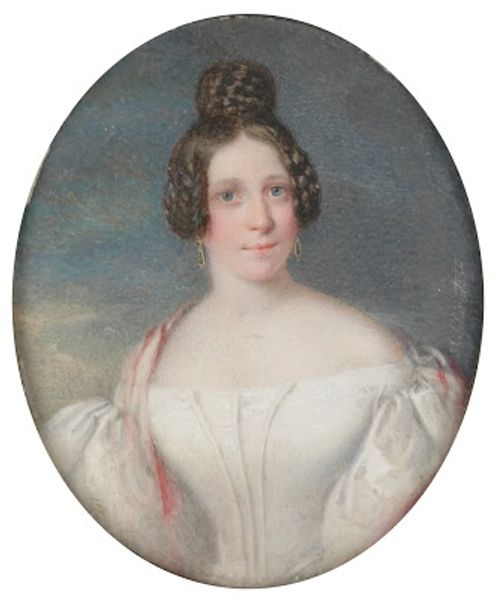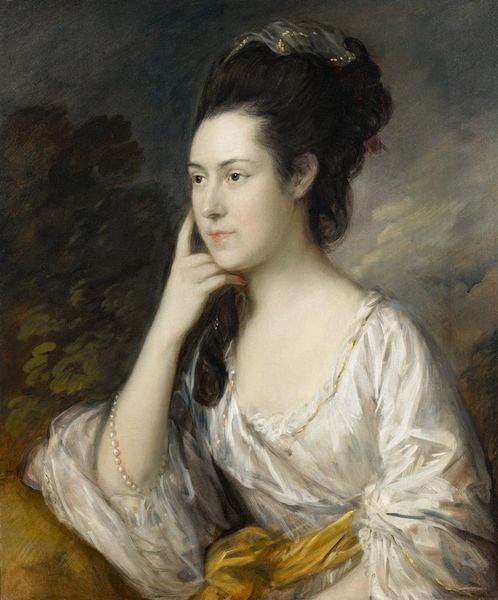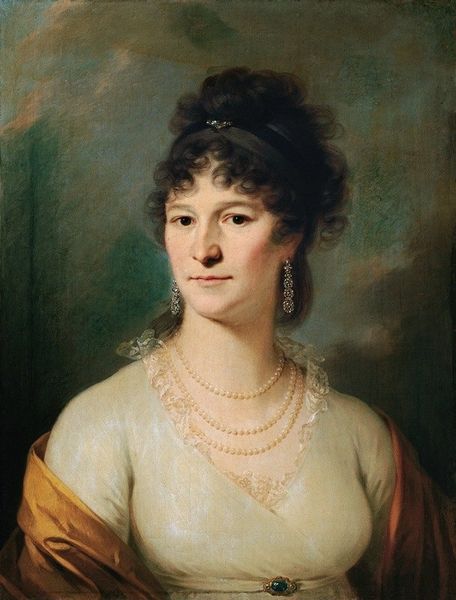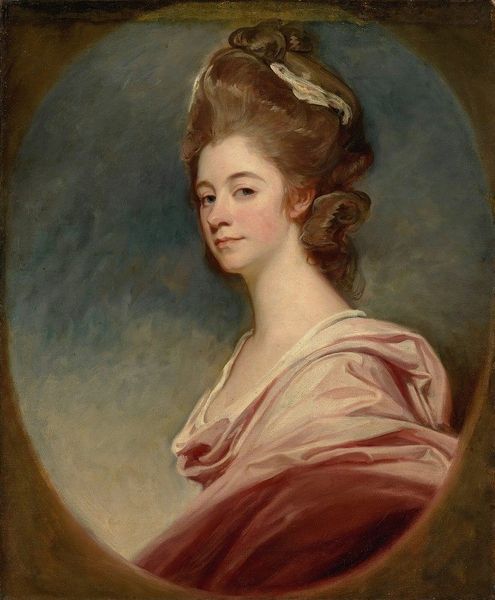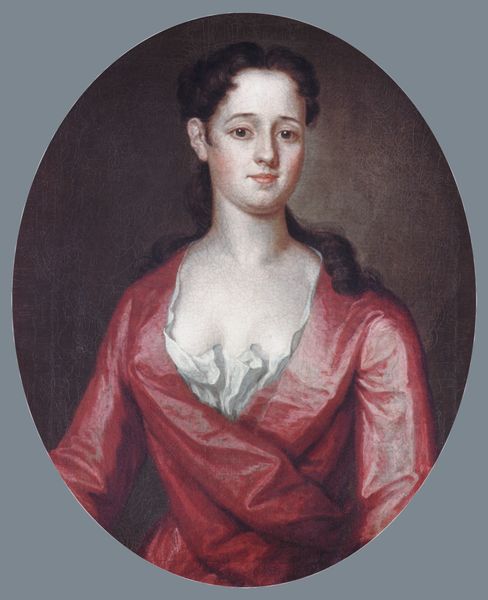
painting, oil-paint
#
portrait
#
figurative
#
neoclacissism
#
painting
#
oil-paint
#
portrait reference
#
portrait head and shoulder
#
animal portrait
#
animal drawing portrait
#
portrait drawing
#
facial study
#
history-painting
#
facial portrait
#
portrait art
#
fine art portrait
#
digital portrait
Copyright: Public Domain: Artvee
Editor: This is Pierre-Paul Prud'hon's "The Empress Joséphine," painted sometime between 1805 and 1809, using oil paints. It's struck me as quite understated. How do you interpret this work, given its subject and time period? Curator: I see it as a fascinating tension between Neoclassical idealism and the very real sociopolitical power dynamics at play. This wasn't just a portrait of a woman; it was a carefully constructed image of imperial authority in post-revolutionary France. What does her pose and attire suggest to you? Editor: Restraint, maybe? The dark fabric contrasts sharply with her pale skin. There’s a kind of somber elegance, rather than outright pomp. Curator: Exactly! Prud'hon softens the typical Neoclassical rigidity. Yet, think about what Joséphine *represented*: a woman of considerable influence in a patriarchal society, deeply implicated in Napoleon's rise. Her beauty, her femininity, were political tools. Editor: So, even this apparent simplicity is loaded with meaning? It's a deliberate downplaying to emphasize a specific type of power? Curator: Precisely. The painting obscures as much as it reveals, forcing us to question whose interests are being served by this particular representation of "Empress." Consider also the exclusion of typical symbols of power. The message shifts away from blatant dominance towards one of subtle control, very attuned to the post-revolutionary sensitivities. Editor: I never considered how her gender and her role intertwined so intensely. That adds a whole new layer to understanding the work. Curator: Indeed. Examining art through the lens of gender and power opens up a world of complexities, compelling us to continually interrogate the narratives we've inherited.
Comments
No comments
Be the first to comment and join the conversation on the ultimate creative platform.
